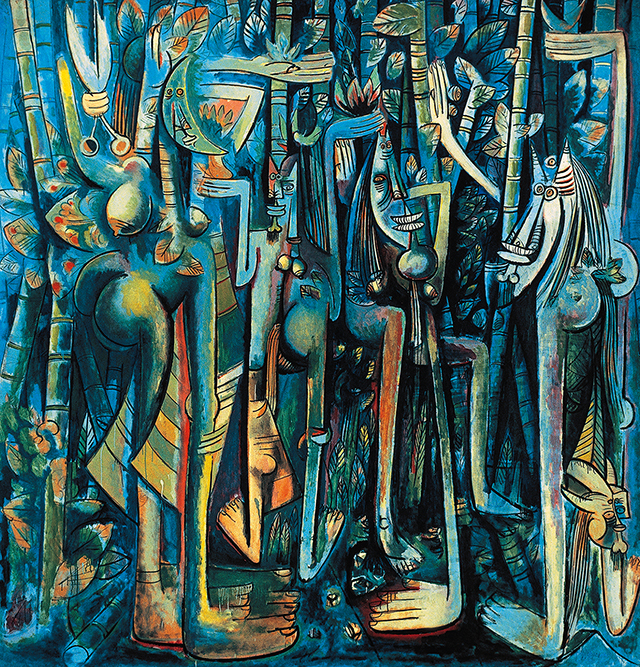My favourite painting: Carlos Acosta
Carlos Acosta chooses his favourite painting for Country Life


The Jungle, 1943, by Wilfredo Lam (1902–82), 7ft 10.in by 7ft 6óin, Museum of Modern Art, New York
'I remember the first time I saw The Jungle. I was at school, but even then it had an effect on me. It represents the colourful and cultural melting pot that is Cuba. The artist had African roots, as so many of us Cubans do, and this is clear in the painting, with the exaggerated figures and lips; the heads of some of the figures are like animals or birds.
Although it is quite Surreal, you can clearly see Cuban vegetation, banana leaves and sugar cane in particular. I like the way that some of the cane looks likescythes, a hint at our history of slavery. It remains our most important work of art to date.'
Carlos Acosta has just retired as principal ballet dancer with the Royal Ballet. He has choreographed Guys and Dolls, which opens at the Savoy Theatre tomorrow
John McEwen comments on The Jungle:
‘His father a Chinese businessman, his mother of African, Indian and Spanish descent, Wilfredo Oscar de la Concepción Lam y Castilla was born in the sugar-cane growing area of Cuba. His family, like many others, practised Santeria, an Afro-Cuban religion that blends African beliefs and customs with Catholicism. His godmother, a healer and sorceress, inspired him to be a painter. She introduced him to the rites of the African orishas, the 401 spirit manifestations of God in Yoruba religion.
In 1923, Lam went to Madrid to study art under Fernando Zaragoza, curator of the Prado and Salvador Dalí’s teacher. He was especially impressed by the medieval demons of Hieronymous Bosch. He married Sebastiana ‘Eva’ Piriz in 1929, but she and their baby son died of tuberculosis in 1931. He sided with the Republicans in the Spanish Civil War, contributing posters and other propaganda.
Exquisite houses, the beauty of Nature, and how to get the most from your life, straight to your inbox.
At the 1938 Paris World Fair, a picture by him was included in the Spanish Pavilion, which also displayed Guernica. Lam went to Paris with a letter of introduction to his hero Picasso, who introduced him to the Surrealists, found him a gallery and shared an exhibition with him in New York. Lam said: ‘I refused to paint cha-cha-cha. I wanted with all my heart to paint the drama of my country, but by thoroughly expressing the Negro spirit… In this way I could act as a Trojan horse that would spew hallucinating figures with the power to… disturb the dreams of the exploiters. This is exemplified by The Jungle, his masterpiece'
An exhibition of Lam’s work will open at Tate Modern on September 14, 2016.
Country Life is unlike any other magazine: the only glossy weekly on the newsstand and the only magazine that has been guest-edited by His Majesty The King not once, but twice. It is a celebration of modern rural life and all its diverse joys and pleasures — that was first published in Queen Victoria's Diamond Jubilee year. Our eclectic mixture of witty and informative content — from the most up-to-date property news and commentary and a coveted glimpse inside some of the UK's best houses and gardens, to gardening, the arts and interior design, written by experts in their field — still cannot be found in print or online, anywhere else.
